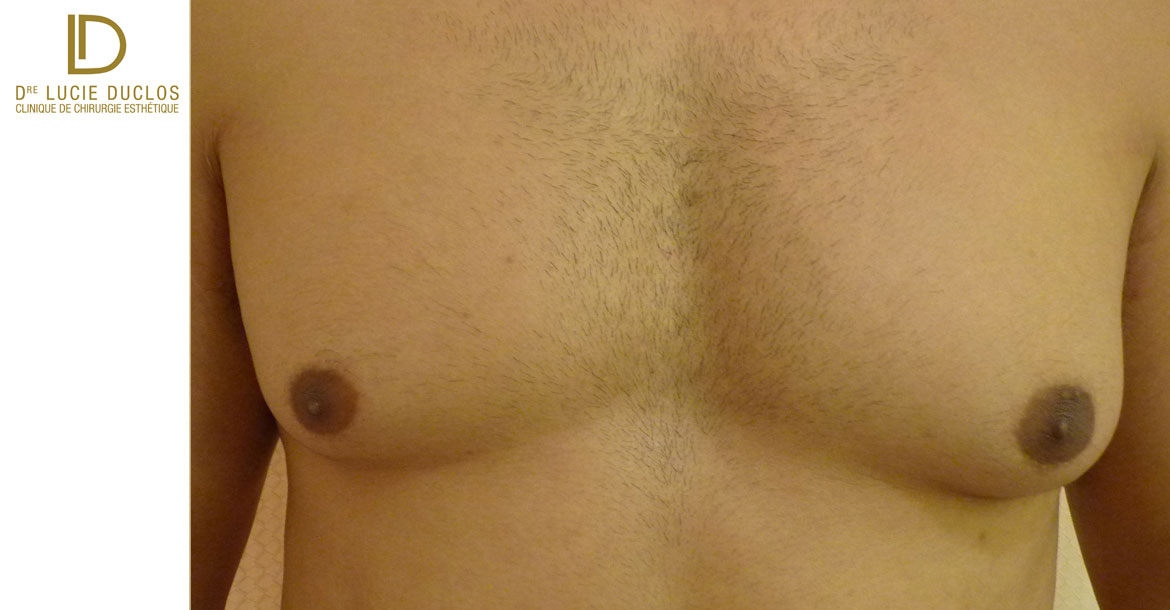What are the advantages?
The presence of mammary glands (gynecomastia) or fat (lipomastia) in the breasts in men is often unpleasant. A subcutaneous mastectomy (if there is gynecomastia or presence of mammary glands) or liposuction (if there is lipomastia or presence of adipose tissue) can alleviate these phenomena and improve the appearance of the thorax.
Is it for me?
Mastectomy or liposuction can improve your physical appearance and your self-confidence, but it will not necessarily change how others behave toward you. Before opting for this intervention, clarify your expectations and discuss them with Dre Duclos. She will be happy to answer clearly and precisely all your questions and to inform you about the most appropriate treatments for your situation. telling you their advantages and disadvantages.
What techniques are used?
Mastectomy involves removing the mammary gland through a very small semi-circular incision located on the edge of the nipple areola. If there is excess skin and sagging skin, a more or less extensive excision of the skin must be done, either at the same time or at a later stage. Liposuction removes fat by suction (more details in the section on liposuction). In certain cases, if there is gynecomastia and lipomastia, the two procedures must be combined.
What should I expect?
During the consultation, Dr. Duclos will assess your state of health and your expectations. She will examine your breasts, check the quality of your skin, the quantity of fat and/or glands and the presence of asymmetry.
She may refer you for a medical evaluation with a blood test to check if a health condition is the cause of gynecomastia. She may also ask you to have a mammogram or breast ultrasound to rule out any diagnosis of breast cancer (1% of breast cancers occur in men).
She will then advise you on the most appropriate surgical technique for your breast type. She will tell you the exact location of the incisions, explain the risks inherent to the procedure, inform you about its progress and give you pre- and post-operative instructions.
Before the operation, you will need to obtain a chest sleeve for the day of the operation. The procedure takes place under local anesthesia, local anesthesia and narcosis or general anesthesia. You will then be under observation until your condition allows you to leave the clinic. A prescription for pain medication, instructions and the date of the next appointment will be given to you before your departure. Plan to ask someone to drive you home.
After the procedure, pain is usually mild to moderate in intensity and is generally well relieved with prescribed medication.
You will need to keep the dressing and the sheath until your follow-up visit, taking care not to get them wet (Dre Duclos will tell you when you can take a shower). You will need to wear the girdle constantly for the first two weeks, then ten hours a day thereafter for 2 weeks. You can apply deodorant the day after surgery.
You will need to avoid any strenuous physical activity for the first four weeks and avoid exposing the scar to sunlight or tanning salon rays for about six months.
What are the risks?
Subcutaneous mastectomy is a relatively safe surgery. However, any intervention carries risks that are important to be aware of. Thus, bleeding (or hematoma), infection, poor healing, adhesions, asymmetry and irregularities can occur.
A temporary reduction or loss of sensitivity of the skin of the chest, areola and nipple may occur and, in very rare cases, may be permanent.
Necrosis (lack of blood supply to the skin) can affect the areola or nipple and create a deformity that can sometimes be difficult to correct.
Excess skin can sometimes persist, requiring corrective surgery.



